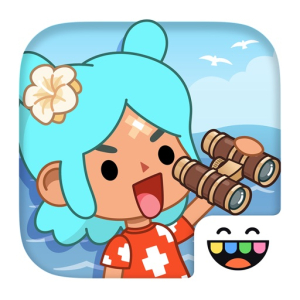From the very moment I booted up Schedule I, I felt as if I had stepped into an entirely new world. I approached the game with curiosity and a hint of skepticism, expecting the typical blend of strategy and adventure. My experience began with a polished startup sequence that immediately set the tone, inviting me to explore its intricate layout and...
Schedule I
From the very moment I booted up Schedule I, I felt as if I had stepped into an entirely new world. I approached the game with curiosity and a hint of skepticism, expecting the typical blend of strategy and adventure. My experience began with a polished startup sequence that immediately set the tone, inviting me to explore its intricate layout and innovative premise. I was anxious to discover what layers of gameplay it offered as I navigated through a narrative that promised both intellectual challenge and immersive storytelling.
The Innovative Gameplay Mechanics
As I delved further into Schedule I, I discovered that its gameplay mechanics were anything but ordinary. The controls were intuitive yet required precise timing, blending strategy and quick thinking in a way that demanded my focused attention. Every in-game decision felt consequential, as the game challenged me to allocate resources and manage in-game events with a level of detail I had not encountered before. I found myself continuously experimenting with different strategies and developing a unique playstyle. This degree of freedom in choosing how to approach obstacles made the experience thoroughly engaging, and each successful maneuver brought a sense of tactical achievement.
The Depth of Storytelling and Narrative
One of the aspects that struck me most was the narrative depth embedded within Schedule I. I was thoroughly absorbed by its rich storyline, which was layered with multifaceted characters and a storyline that intertwined personal intrigue with high-stakes challenges. The dialogue was well crafted, and every conversation had a subtle nuance that contributed to a greater understanding of the underlying themes. I appreciated how the narrative did not simply rely on cutscenes but instead integrated storytelling into the gameplay itself. This seamless integration meant that my decisions would slowly unravel the plot, making every step feel like a personal journey towards unearthing hidden secrets.
The Stunning Visual and Artistic Design
The aesthetic presentation of Schedule I was something I found to be both captivating and thought-provoking. The artistic design took a step away from conventional visuals, combining surreal environments with intricate sprite work. I marveled at the attention to detail in every frame, where every shadow and light effect was purposefully designed to evoke a specific mood. The color palette was diverse yet harmonized perfectly with the ambiance of the game, drawing me deeper into its universe with every subtle shift in tone and atmosphere. I often paused to admire specific scenes, feeling that each was a piece of art meticulously crafted to complement the narrative.
The Impact of Soundtrack and Audio Dynamics
The auditory experience played an essential role in my overall immersion. Schedule I boasted an original, thought-provoking soundtrack that set the pace and tone for every segment of the game. As I navigated through tense moments and moments of quiet introspection, the dynamic audio cues worked in tandem to amplify my emotional response. The background score was more than just music; it was an extension of the game’s world, creating layers of mood that underscored the unfolding drama. Every sound effect, from the subtle hum of an engine to the rhythmic cadence of in-game events, resonated well with the overall theme, and I found that this level of sound design significantly enriched the gaming experience.
The Challenge of Complex Puzzles
At various points during my journey, I encountered puzzles that tested my problem-solving skills in unexpected ways. Unlike many games where puzzles can feel repetitive or overly linear, Schedule I provided challenges that were deeply intertwined with its central mechanics. I especially appreciated the variety in puzzle design; some required rapid reflexes while others demanded a more analytical approach. This balance between speed and strategy meant that every puzzle was not only a test of skill but also a rewarding experience that left me feeling accomplished upon solving them. I remember moments where hours of thoughtful trial led to sudden, gratifying clarity—these instances always reminded me of the game’s capacity to combine entertainment with the satisfaction of intellectual triumph.
The Fluidity and Responsiveness of Control Systems
For a game that hinges so heavily on precision and tactical locations, the control system needed to be both responsive and forgiving enough to allow for experimentation. I appreciated that Schedule I offered multiple layers of control sensitivity, making it possible to tailor the experience to my playstyle. The input response was smooth, allowing for swift transitions between combat, strategy, and puzzle manipulation. This adaptability made it feel like the game was actively encouraging me to engage on multiple fronts without the frustration of unresponsive or lagging controls. Every interaction was balanced perfectly between challenge and accessibility, which enhanced my overall engagement and prolonged my interest.
The Integration of Strategic Elements
Beyond the immediate thrill of gameplay, Schedule I excels in the strategic dimension it brings to the table. I found that every decision, from resource management to character interactions, had long-term effects on how the game unfolded. This layered system of strategy meant that no two playthroughs were exactly alike, granting an impressive degree of replayability. The challenge was not merely in accomplishing in-game tasks but also in foreseeing potential ramifications of my decisions. This deeper level of engagement pushed me to think several moves ahead, adding an element of tactical depth rarely seen in similar titles. I constantly asked myself if there was a better approach, making the gameplay an ongoing experiment in strategy and foresight.
The Versatility of User Interface and In-Game Tools
Interface design is critical in navigating complex environments, and Schedule I did not disappoint in this area. I found the user interface to be both sleek and efficient, offering clear visual cues that easily directed my attention to key objectives. In-game tools and menus were logically arranged, reducing the time spent searching for information and increasing the time I could devote to actual gameplay. The efficiency of these elements was evident during high-pressure moments when quick decision-making was necessary. This streamlined design ensured that I always remained oriented and informed, while still leaving enough room for occasional surprises hidden behind well-crafted menus. The balance between simplicity and functionality was a true asset that contributed to a smooth and enjoyable experience.
The Immersive World-Building Process
For me, the success of a game often hinges on how well it builds and sustains its world. Schedule I achieved this through meticulous world-building, with quietly detailed backstories scattered throughout the environment. Every in-game location told a subtle story of its own, inviting me to explore and piece together the broader lore. I was particularly impressed by the way ambient storytelling was woven into every corner of the game. Background details such as mysterious notes, obscure landmarks, and carefully sculpted landscapes enriched the overall atmosphere. The game allowed me to immerse myself in a fully realized world that felt both mysterious and believable. As I moved from one scene to another, the interconnectedness of the game’s locations continuously encouraged me to dig deeper into its rich tapestry of narratives.
The Role of Multiplayer and Community Interaction
Another feature that stands out in Schedule I is its thoughtful approach to multiplayer and community engagement. Although my journey was predominantly a solo venture, I spent considerable time exploring the multiplayer elements of the game. I was impressed by how seamlessly these features integrated with the strong single-player narrative, creating a collaborative platform without diluting the integrity of the story. The online mode provided opportunities to exchange strategies with other players, participate in co-op challenges, and even witness alternative storylines unfold in real time. The community’s interaction with the game was dynamic and supportive, adding layers of shared experiences and discussions that enriched my understanding of the game’s intricate design. These multiplayer dynamics offered a refreshing contrast to the solitary puzzle-solving, ensuring that there was always an additional level of engagement to explore.
The Creative Implementation of Unique Game Elements
What truly elevated my experience with Schedule I was its creative approach to blending various genres and mechanics into one cohesive experience. I found that elements typically associated with different game types coexisted in a surprisingly harmonious manner. The game combined aspects of strategy, adventure, mystery, and even a touch of survival dynamics, resulting in a tapestry that was both unpredictable and captivating. Every innovative mechanic felt like a deliberate choice to push the boundaries of conventional game design, making the learning curve both challenging and intellectually stimulating. As I experimented with these gameplay elements, I found that the game was constantly evolving, rewarding creativity and out-of-the-box thinking. Its nuanced approach to mechanics set a high bar for interactive experiences, making every session feel like an engaging journey into uncharted territory.
The Emotional Resonance in My Playthrough
Perhaps one of the most compelling aspects of Schedule I was its ability to evoke genuine emotional responses. As I progressed through the game, I experienced a range of emotions, from the thrill of a successful strategy to a deep, reflective curiosity about the unfolding narrative. The character arcs and in-game interactions often stirred feelings of empathy, excitement, and even introspection. It was clear that the designers had meticulously orchestrated every emotional beat, ensuring that interactions were as impactful as the visual and strategic elements. I found myself laughing, pondering, and occasionally feeling a profound sense of connection to the game’s world. The genuine emotional resonance embedded within the gameplay elevated my overall experience, making every moment feel personally significant and dynamically memorable.
The Hidden Layers and Easter Eggs in the Experience
While I was deeply engaged with the main storyline, I quickly learned that Schedule I was also brimming with hidden layers and delightful secrets waiting to be discovered. The inclusion of subtle Easter eggs and cleverly concealed references not only rewarded thorough exploration but also sparked my curiosity repeatedly. I would often find myself retracing steps or revisiting areas I had previously cleared, intrigued by the prospect of uncovering new details. These hidden elements not only provided a sense of satisfaction upon discovery but also served to deepen the world-building, hinting at a much larger lore that extended beyond the primary narrative. It became a delightful treasure hunt within the game, urging me to dive back into familiar territory with fresh eyes each time I uncovered a new clue.
How to Download and Play Schedule I on Different Platforms
Schedule I is a free game available on a wide range of devices. You can download, install, and play it on PC, console, and mobile. This guide will show you how to get started on various platforms.
On Windows PC, Schedule I is available. You can download the game from its official website or a trusted digital store. Make sure your computer meets the minimum system requirements.
On Mac, Schedule I is not officially supported. If you really want to play it on your Mac, you might consider using an emulator, though performance may vary.
On Chromebook, the game is not officially supported. However, you can try playing it using cloud gaming services if your device supports them.
For PlayStation 5, Schedule I is fully supported. You can download the game from the PlayStation Store without any extra conditions.
For PlayStation 4, the game is also available via the PlayStation Store.
On PlayStation 3, Schedule I is not available.
On Xbox One, you can download Schedule I from the Microsoft Store. The game is designed to work well on this platform.
On Xbox 360, the game is not available.
Schedule I is supported on Xbox Cloud Gaming. To play on this platform, you need an Xbox Game Pass Ultimate subscription.
For Nintendo Switch, Schedule I is available. You can download it from the Nintendo eShop if you are in a supported country.
On Android devices, Schedule I can be downloaded from the official app or from trusted third-party stores if available. Make sure your phone or tablet supports a 64-bit operating system and the Vulkan API.
On iOS devices (iPhone/iPad), Schedule I is not available on the App Store due to current restrictions. You might try cloud gaming as a workaround to play the game.
To install Schedule I, simply download it from the correct official store or launcher for your device. Follow the installation instructions provided on the website or app store.
On PC, Schedule I needs at least an Intel Core i3 processor, 8 GB of RAM, and a DirectX 11-compatible graphics card. For Android, ensure that your device is 64-bit and supports the Vulkan API.
Schedule I is an online multiplayer game, and using Cheats or Mods is not allowed. Using any third-party cheats or mods may result in a permanent ban from the game.
Schedule I cannot be played unblocked in school or work environments without using VPNs or cloud gaming platforms. Always check with your institution or employer before attempting to bypass any network restrictions.






















